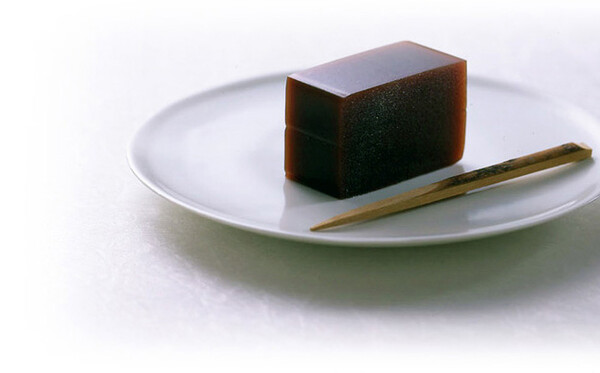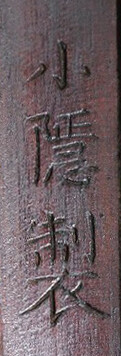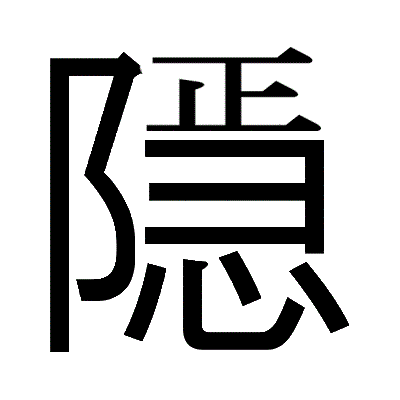-
Posts
3,242 -
Joined
-
Days Won
99
Content Type
Profiles
Forums
Events
Store
Downloads
Gallery
Everything posted by Guido
-
I understand that you weren't confused, but Fred himself seems to have mistaken jūyō bijutsuhin for jūyō bunkazai in the write-up on his website - and on FB a seasoned collector even stated the sword was one of the missing national treasures! Anyhow, this is the first time I've seen a jubi certificate being re-issued after 1950 (but don't claim any knowledge in this regard, there might be other cases), but certainly the first time that it didn't loose its designation after leaving Japan (at least that's the impression I got from Fred's website). In any case, I'll try to pull some strings and find out how the system works. P.S. to the person who PM'd me: if you don't allow PMs to be replied to in your settings, I can't answer you.
-
Looks like 横川 Yokogawa.
-
-
If you want your wish to become true, you first need to paint one eye of the Daruma (https://en.wikipedia.org/wiki/Daruma_doll).
-
There seems to be some confusion in regard to the designation of this sword: it’s not an "important cultural property" (jūyō bunkazai 重要文化財), but an "important art work" (jūyō bijutsuhin 重要美術品). Kokuhō and jūyō bunkazai, according to the 1950 bunkazai-hogo-hō 文化財保護法, have to remain in Japan under penalty of law, while jūyō bijutsuhin (like Fred’s sword) can (and have been already) legally exported. In order to get an export permit (kobijutsuhin-yushutsu-kansa-shōmei 古美術品輸出鑑査証明), the proper paperwork has to be submitted to the bunka-chō-bijutsu-kōgei-ka 文化庁美術工芸課 (Art and Craft Section of the Cultural Agency). Although the "old" form - that never was changed since originally issued (see attachment) - states that kokuhō, jūyō bunkazai and jūyō bijutsuhin can't be exported "as a general rule", the website of the Tokyo Metropolitan Board of Education (http://www.kyoiku.metro.tokyo.jp/pickup/p_bunka/jyuho-3-2.htm) doesn't mention jūyō bijutsuhin at all, only kokuhō and jūyō bunkazai. I never tried to export a jūbi myself , so I don't know if there's a special form for important art work.
-
Please keep in mind that that one can bring only 3 swords at a time into / out of Japan personally, i.e. as checked luggage - and that one has to spend considerable time at the airport in Japan for the paperwork in both cases. If I was in the business of doing that, I'd charge a premium for my time / inconvenience. So please go easy on Paul.
-
I’m not too fond of black same, but that’s just my personal taste. I recently had daishō-tsuka re-wrapped and the rotten same replaced with very high quality same with big oyatsubo, the same alone set me back about US $ 600.-, and it isn’t as nice as the one of your tsuka. Having it convincingly antiqued added another $ 150.-. I therefore think it would be a waste to cover your naturally aged same with black lacquer. Again, just a matter of taste. If you indeed feel the irresistible urge to put black lacquer on it, I recommend Cashew.
-
If you intend to put it on the nice same of the tsuka you recently bought I refuse to answer.
-
Or maybe there are crooks who want to pair the papers with another sword (or fitting)? Although I understand the motivation for buying obsolete papers if one has criminal intent, I don't get it why anybody would support that and sell those papers. I hope the sellers will get some payback when they themselves become the victim of that kind of fraud.
-
The numbers I gave are on public record, they can be found on the Japanese NBTHK website. Although under the new system there always was the possibility for joint hozon / tokubetsu hozon submission, many people just applied for hozon because they only needed proof that the sword is not gimei, an educated opinion in the case of mumei, a stepping stone for jūyō submission, or simply to save some money, especially since the difference between hozon and tokubetsu hozon wasn't that huge. The numbers are from 2011, and my guess is that they'll change soon with a higher percentage of th - because one now needs those papers in order to apply for jūyō, and th criteria got stricter and therefore are indicating higher quality.
-
Maybe some actual numbers will help in determining if indeed almost any sword makes hozon, and that there’s not much of a difference between hozon and tokubetsu hozon: As of 2011, 123,701 swords were submitted under the new system for hozon tōken, of which 79,999 received papers. The numbers for tokubetsu hozon tōken are 39,066 swords, of which 21,599 passed. Of course we don't know how many people were satisfied with just hozon, and never submitted for tokubetsu hozon afterwards (or at the same time), or even went straight for jūyō after hozon. The NBTHK also doesn't disclosed the failure rate for jūyō and tokubetsu jūyō, just the number of swords that passed (10,950 and 920 respectively). In my personal experience, the gap between hozon and tokubetsu hozon has widened considerably the last 10 or so years – and I think that’s a good thing. In 2005, I submitted a ubu Bizen Norimitsu katana with naga-mei and ura-nenki, no flaws at all, for tokubetsu hozon shinsa; it failed. When picking it up, I was told that it was slightly tired, and that Muromachi period blades should be in perfect condition in order to receive TH. Bummer, but lesson learned. I fell for *long mei + date + ubu + no ware = automatically TH*, which was maybe true in the 90’s, but not anymore. (I later sold it to a dealer [telling him about the failure], but he didn’t mind, saying that mei and nenki will help it sell fast [which it did]). Btw, Paul, all old (green) papers were issued in Tokyo, even if the shinsa itself took place at local branches, so there’s no way of telling the difference if one hasn’t access to the records at the NBTHK honbu.
-
應光廣君需 By request of Mr. Mitsuhiro. It’s quite unusual to only state the given name of the person who ordered the sword.
-
The seller is Japanese, and picked the wrong word from the dictionary: 車 kuruma means "wheel", but is also used as an abbreviation for "car/automobile" (自動車 jidōsha, i.e. "self-moving wheel").
-
Since it's the habaki that ensures that the blade doesn't slip out of the saya by its own, I guess a "perfect" saya fit isn't that critical (as long as the blade doesn't rattle or got stuck in the saya).
-

Update On Gold Menuki From Ginza Seiyudo
Guido replied to PhoenixDude's topic in Auctions and Online Sales or Sellers
The original sales page is still up: http://www.seiyudo.com/me-060916.htm And here is their return policy, i.e. no return of items without kanteisho / fittings: http://world.seiyudo.com/rule/ -
Can't find him either - and 龍鳳亭 (dragon phoenix pavillion) definately sounds like a Chinese restaurant
-

Nihonto Collection - General Ideas On Makeup
Guido replied to Vermithrax16's topic in General Nihonto Related Discussion
I took this thread as a reminder to edit (again) my (already 15 years old) article about my take on collecting - so, if anyone didn't read it yet, and is reasonably sure to not fall asleep until page 16 , here it is: principles.pdf -
Thanks for yet another link to download a catalog, Ed - even if this one has its shortcomings, it's hard to complain when its for free
-

Nihonto Collection - General Ideas On Makeup
Guido replied to Vermithrax16's topic in General Nihonto Related Discussion
Sorry, but that's simply not true, not even as a generalization. There are many, many shintō and shinshintō, and even shinsakutō blades with the most amazing hada. Art is art, whether it was made 1, 100, or 1,000 years ago. Not all kotō are great works of art, e.g. blades from the Sengoku period, which are highly esteemed by many Western collectors just because of the very fact that they are kotō: most of them are mass-produced, and don't reveal anything which could be called worth being collected. It all comes down to quality - those who are not able to see quality in a blade won't see it at all, no matter if it's kotō, shintō, or a Chinese fake. -
Ron, the motif - i.e. the demon -is called shikami 獅噛.
-
I really appreciate all the help (in this thread and via PM), and especially Markus for the confirmation - I wasn't aware of that website, it's bookmarked now!
-
I’m searching for one of the kanji on a wood carving; the first 小 is as easy as it gets, and the third 製 usually means “made by” in this context. However, the middle one has me stumped. I *assume* it’s 隠 (which is already an abbreviation of 隱), but I can’t find a single example. Any suggestions/confirmation? What's the name of the artist/craftsman?








